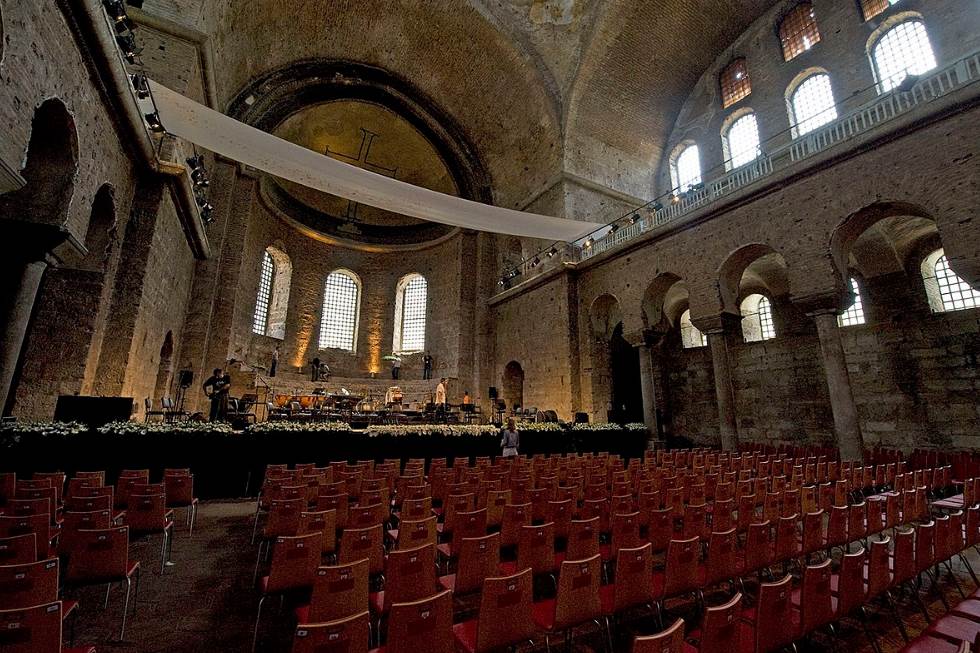Within the compounds of one of the greatest palace complexes in the world, you can find a remarkable religious structure.
This Byzantine building is one of the few of its kind that hasn’t been transformed into a mosque and it holds a fascinating record as well.
In this article, we take a closer look at some of the most interesting facts about Hagia Irene, a building in Istanbul that has a history that goes back to the 4th century.
1. It’s located in between two of the most famous buildings in Istanbul
Hagia Irene might not be the most famous building in Turkey’s most populous city, it’s definitely one of the most intriguing ones.
It’s the oldest Christian church that was constructed in Constantinople, the former name of Istanbul, and one of the few that wasn’t converted into a mosque.
It’s located in the middle of the historic heart of the city known today as the Fatih District. This is the peninsula where the ancient city of Constantinople was established.
The church was constructed at the southern end of the Topkapi Palace and is situated in between this famous palace and Hagia Sophia, arguably the most famous building in the city.
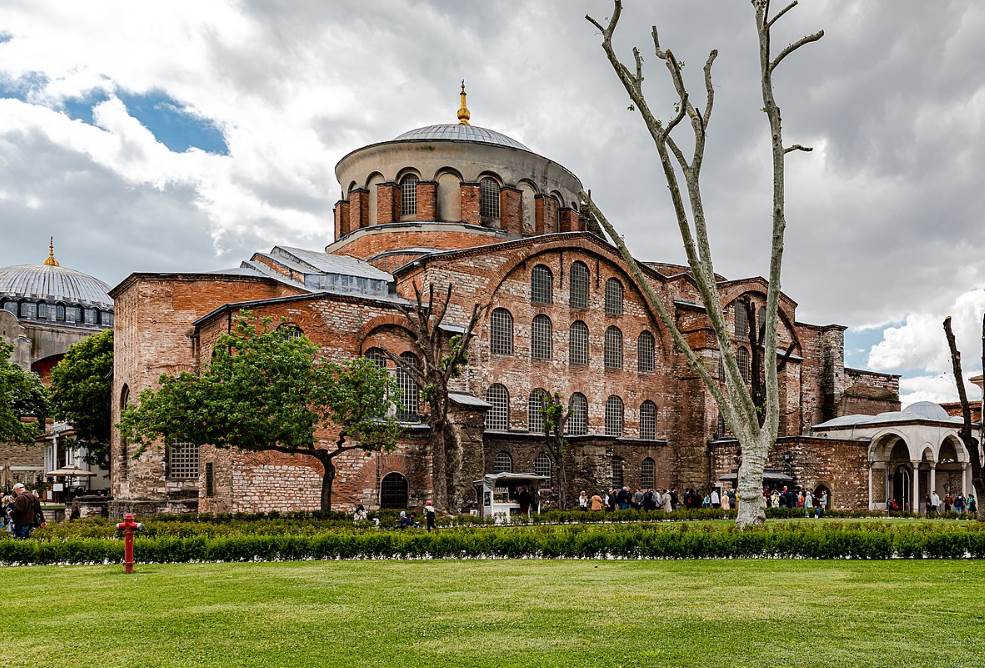
2. It was constructed on the remains of an ancient Roman temple
The Bosphorus Strait forms the natural boundary between Europe and Asia, and the modern-day city of Istanbul is located on both sides.
The fact that Istanbul straddles this trait makes it no surprise that it has been one of the most important cities in the region for millennia.
The city was founded as Byzantium in the 7th century B.C. by Greek settlers and it became the capital city of the Roman Empire in 330 A.D.
The Romans were serious builders and the city features all the facilities that they constructed, including Roman Temples, Roman Bathhouses, a Forum, and Roman Amphitheaters.
Hagia Irene was constructed on the remains of one of the Roman temples that once occupied space in the modern-day Fatih district of the city.
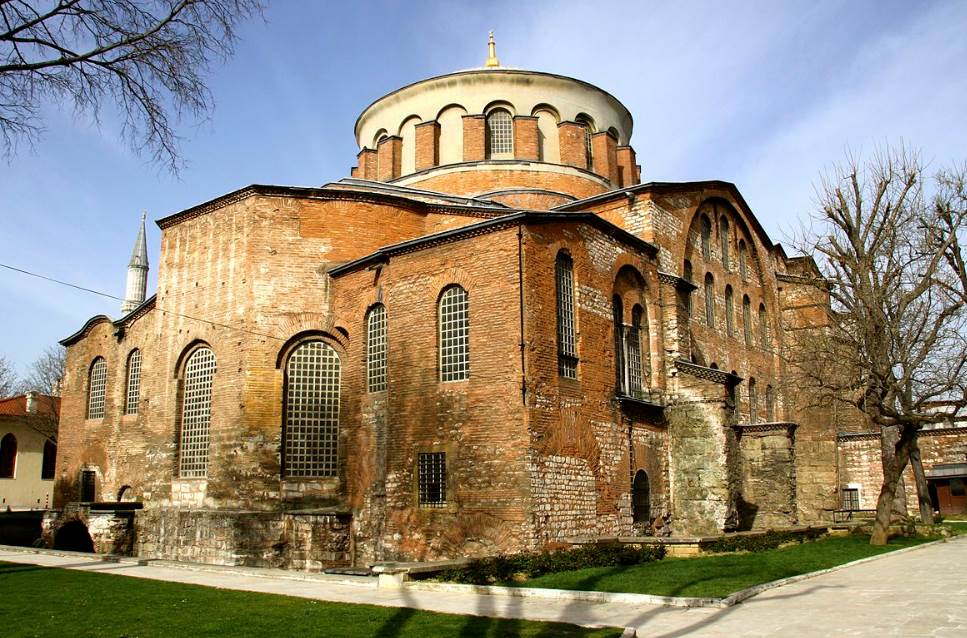
3. The church was commissioned by the first Christian Roman Emperor
Constantine the Great, the first Roman Emperor who converted to Christianity, commissioned the construction of the first church in the city.
It was completed by 337 A.D. and Hagia Irene, therefore, precedes Hagia Sophia which was completed in 360 A.D.
It served as the main church of the Patriarchate, also known as the Eastern Orthodox Church, from its completion and the time that Hagia Sophia was consecrated.
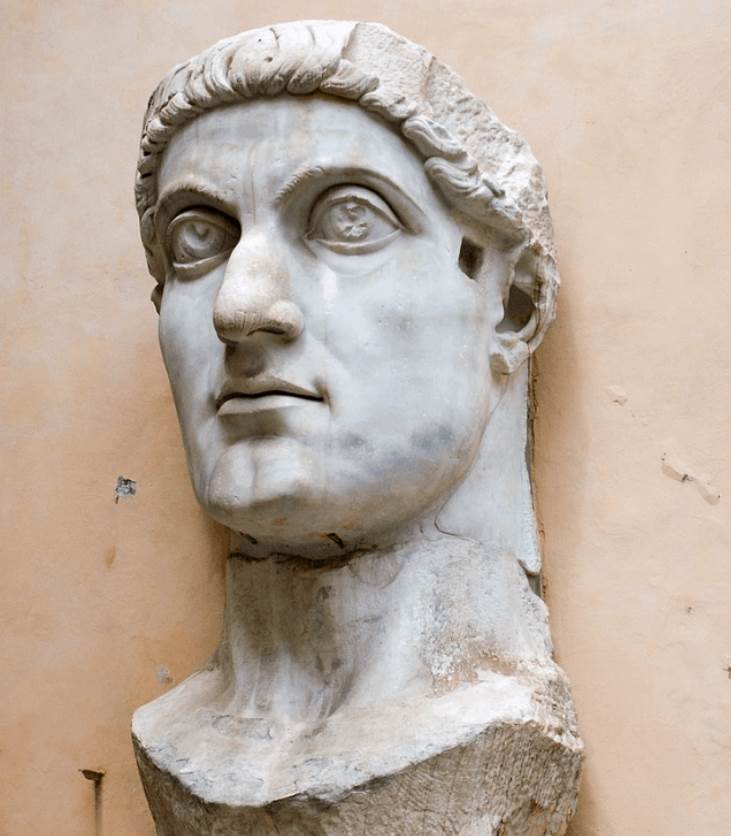
4. The lower parts date back to the reconstruction project in the 6th century
One of the most devastating events in the history of Istanbul happened in 532 A.D during the reign of Roman Emperor Justinian I (482-565).
He also constructed the Basilica of San Vitale in Ravenna, Italy, which features magnificent mosaics depicting him and his wife Theodora.
The so-called “Nika Revolt” aimed to overthrow him, and although large parts of the city were flattened and about 30,000 people lost their lives, he stayed in power.
He rebuilt the destroyed Hagia Irene but modified the plan to a cross-domed design. The lower part of the building dates back to this construction phase.
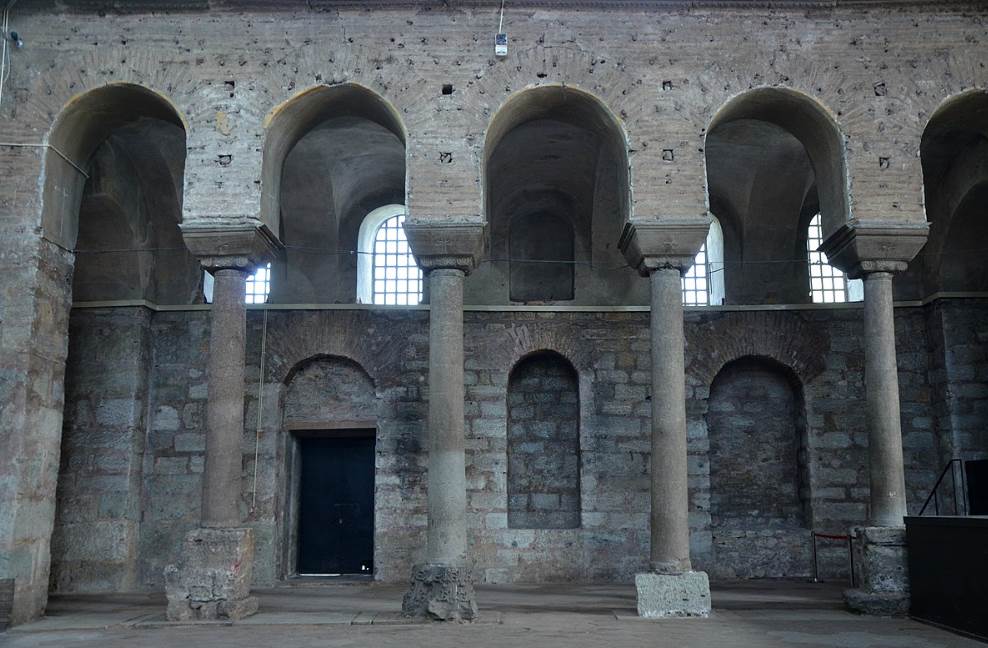
5. The upper parts and mosaics were added following an earthquake in 740 A.D.
Justinian’s church was damaged severely once again during the 740 Constantinople earthquake. Because of the significance of the building, it was reconstructed shortly after.
Emperor Constantine V (718-775) completed this project and substantial improvements to the foundations ensured he only needed to repair the upper section.
The dome, 15 meters (49.21 feet) in diameter and 35 meters (114.82 feet) in height, and the other parts of the upper section of the church date back to this phase in the 8th century.
Equally remarkable is the fact that the mosaics that decorate the building’s interior were added during this period. The most fascinating one is a mosaic featuring a gold ground and black cross.
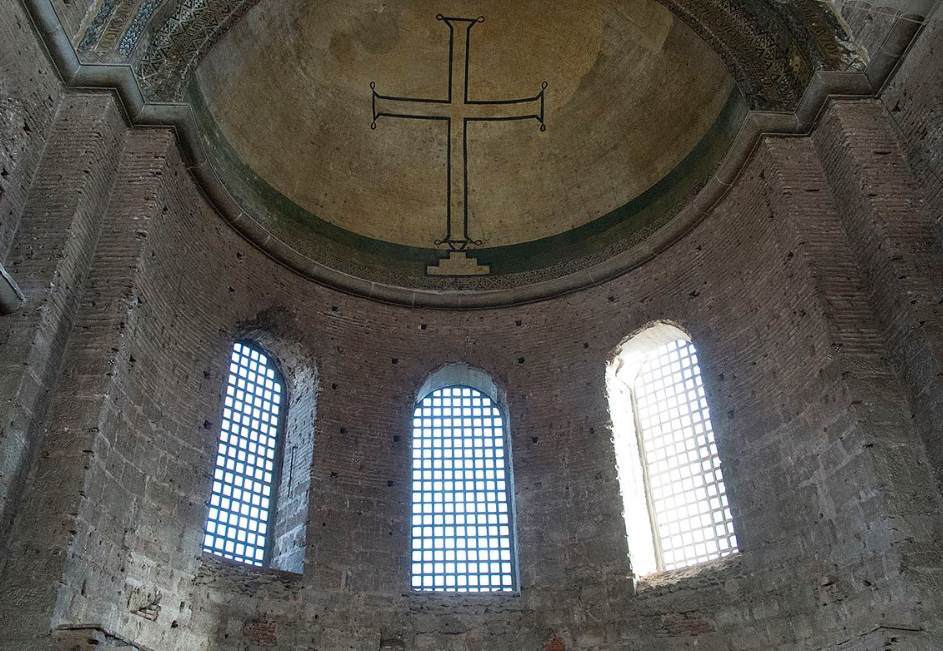
6. Hagia Irene is home to a unique Byzantine feature in Istanbul
The apse of the church features a semi-dome that holds a so-called synthronon. This consists of rows of benches where the clergymen used to sit during Divine Liturgy.
There are doors on each side of this synthronon and this feature of Hagia Irene features 6 rows of benches.
What’s fascinating is that it’s the only Byzantine synthronon that still exists in Istanbul.
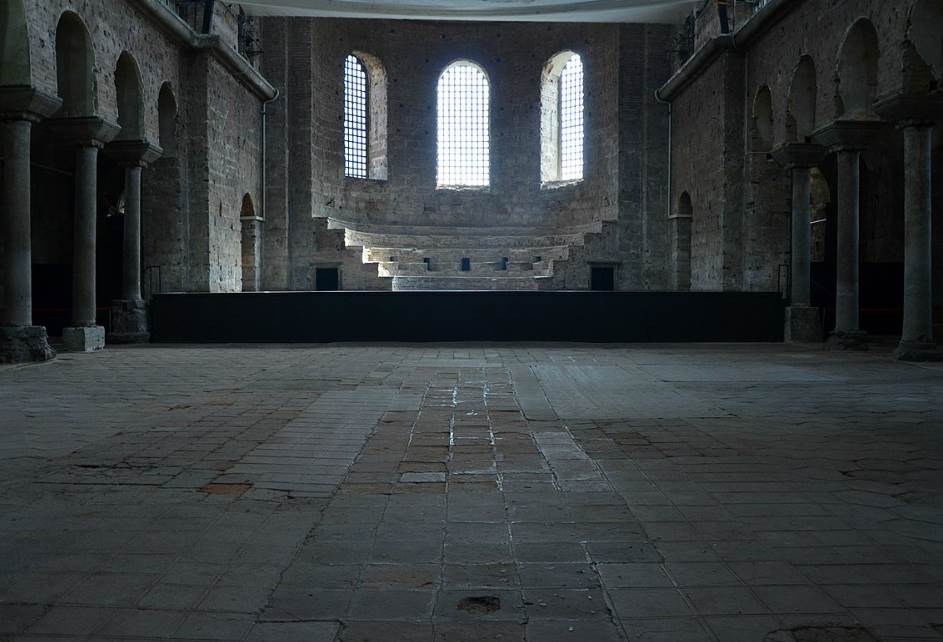
7. It was used as an arsenal and military museum during the Ottoman period
The building remained in use as an Orthodox Church until the Fall of the Eastern Roman Empire in 1453.
Ottoman sultan Mehmet II instantly replaced the cross on top of the dome with the crescent moon symbol of Islam.
Because the building was located within the compound of Topkapi Palace at the time, it was still used as an arsenal by the Janissaries, the elite infantry of the Ottoman rulers.
It retained this function until 1826 although it had been transformed into the National Military Museum in 1726 by Sultan Ahmet III. It retained this purpose until well into the 20th century.
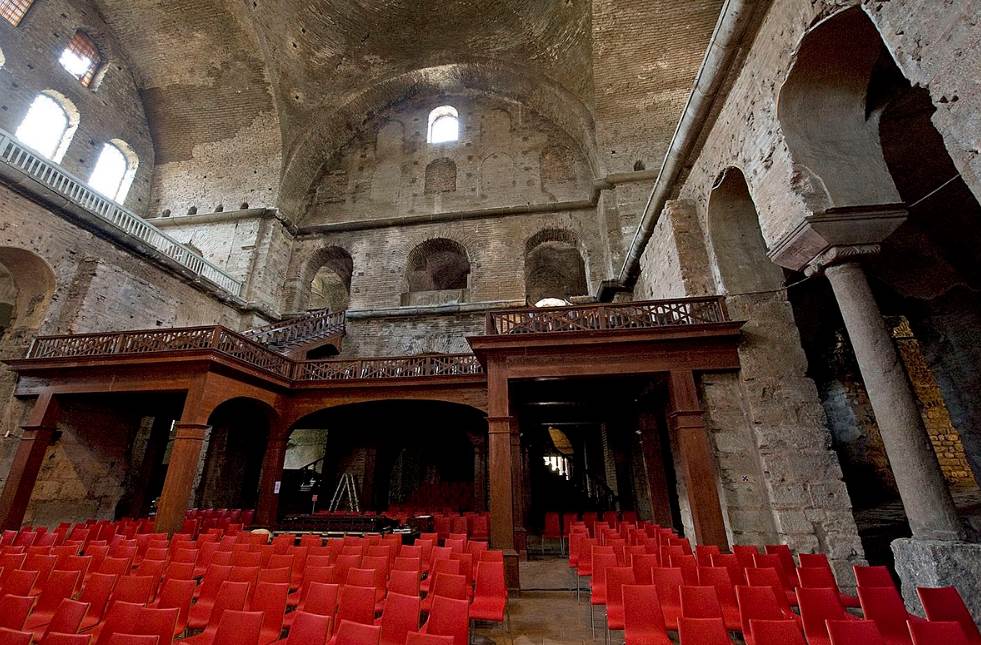
8. The ancient building is still used as a concert hall with amazing acoustics today
Today, the former Eastern Orthodox Church is one of the attractions for tourists visiting Topkapi Palace and it’s managed by the Turkish Ministry of Culture.
One of the most amazing facts about Hagia Irene is that it still serves a purpose as a concert hall today. The amazing acoustics inside the building make it perfect for classical music performances.
Since 1980, it has been one of the venues of the Istanbul International Music Festival which is held annually in June and July.
